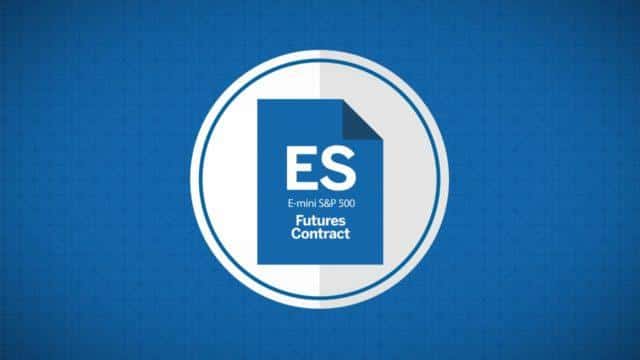
Futures trading has existed for centuries, dating back to the times of the Dutch Tulipmania in the 16th century. In 1898, the Chicago Mercantile Exchange was founded and remained the largest exchange in the world for this type of trading.
This is an interesting market heavily traded by all kinds of investors globally. Part of the attraction with this derivative is due to the transparency and, oftentimes, the real-time volume data which isn’t present on non-exchange-traded products.
While futures are an attractive instrument, they still present high barriers to entry regarding capital. But this all changed with the introduction of the E-mini. If you’re new to this trading form and are considering getting involved, the e-minis are more accessible for several reasons, which this article shall explore further.
What is an e-mini futures?

First, a future is a type of derivative where two parties agree to buy or sell a particular financial instrument at a pre-specified price and expiry date in the future. Such a concept applies to many markets like stocks, indices, commodities, currencies, bonds, etc.
Some contracts stipulate the physical delivery of the underlying asset in question (typically commodities), but many are simply cash-settled electronically. Investors have historically used this derivative for hedging and, more recently, even speculative purposes.
While futures have immense benefits, they still have larger capital requirements because of the contract size. However, this all changed on 09 September 1997 when the CME introduced the E-mini for the S&P 500.
The E-mini product is an electronically traded future which is a fraction of the value of a standard contract, more specifically a fifth. E-minis are traded mainly on the CME who offer it on several instruments like:
- Russell 2000
- Russell 1000
- S&P MidCap 400
- S&P Smallcap 600
- NASDAQ 100
- NASDAQ Composite
- NASDAQ Biotech
- Dow
- Certain currencies (USD against EUR, GBP, CHF, JPY, AUD, CAD, CNH, etc.)
- Metals and commodities (gold, silver, copper, corn, wheat, soybeans, etc.)
Yet, the S&P remains the market with the most trading volume in E-minis. In fact, most who refer to the E-mini often mean the one tracking the price of the S&P.
As expected, E-minis have made such trading more accessible than before because of the drastically reduced monetary requirements. This change resulted in increased market participation through many more so-called smaller traders who couldn’t trade the full-size futures.
How do the E-minis work?
We’ll break down this part into sections for easier reading.
Tick sizes
One of the main things to wrap your head around with E-mini futures is the tick sizes which vary widely depending on the instrument and exchange. For instance, on the original S&P E-mini, each tick is worth $12.50.
We arrived at this figure by considering each 1 point move on the S&P E-mini is $50, while an index point is worth 0.25. Hence, $50 X .25 equals $12.50, a fifth of the size of the standard-sized $250 S&P futures contracts.
The exchange will provide the appropriate tick sizes depending on the market one wishes to trade.
Trading hours
As briefly mentioned, E-mini futures are tradeable through the CME almost 24/5. The trading week begins on Sunday at 5 pm and ends on Friday at 4 pm CST (Central Standard Time). Scheduled maintenance occurs every day between 4 pm and 5 pm CST.
Trading is split into two sessions, the day session and after-hours sessions. The former begins at 8.30 am and concludes at 3.15 pm CST, while the latter picks up from when the day session ends and finishes at 8.30 am CST.
Contract expiry and rollover periods
Like any future, you need to know the contract expiry and rollover times. E-mini contracts expire on the third Friday of March, June, September, and December. The rollover times, when most trading transitions from the old to the new contract, occur on the second Thursday of March, June, September, and December.
If the rollover month begins on a Friday, it would be the first Thursday of the month instead.
Margin requirements
Lastly, we’d need to consider the margin requirements. In most futures, you need to maintain three margin balances; the minimum to open the account, the initial, and overnight. Of course, these vary widely based on the traded underlying asset.
For example, you require an initial and maintenance margin of about $12 650 and $11 500, respectively, for the S&P E-mini with most exchanges. The minimum to open the account can range from $2 000 to $5 000 (again, depending on the broker/exchange).
Still, these capital requirements are large for the average investor, hence the recent introduction of an even smaller version of the E-mini, the micro E-mini.
Micro E-mini futures
In May 2019, the CME made another historic announcement with the launch of the Micro E-mini futures, which are 1/10th the size of a standard futures contract. Therefore, the margin requirements are much lesser, accommodating even more traders who couldn’t trade the E-minis on some instruments.
The micro E-mini futures function the same as their ‘sister’ futures aside from the reduced volume. While E-mini futures are a significantly reduced fraction of size than standard contracts, micro E-mini futures are even lower.
Final word
In summary, this article highlights how futures haven’t been concentrated anymore to select large traders and institutions because of E-minis. These products have broken down the rigid standard futures into ‘bite-sized chunks, making trading more flexible and the market more liquid.
Overall, futures trading provides several distinct advantages we don’t find in decentralized markets like currencies. Aside from their high liquidity, transparent pricing, ability to hedge and speculate, futures trading is fully regulated and provides real volume information.
Regulation is becoming increasingly important for any financial market as it eradicates counterparty risks and malpractice from unscrupulous parties. The volume aspect is beneficial for order flow enthusiasts who seek to understand what the so-called professionals are doing.
Ultimately, futures trading of any kind is challenging as with any financial instrument considering the volatility of the markets and the use of margin. Nonetheless, we hope this article has provided an excellent introduction to the world of E-mini futures.





